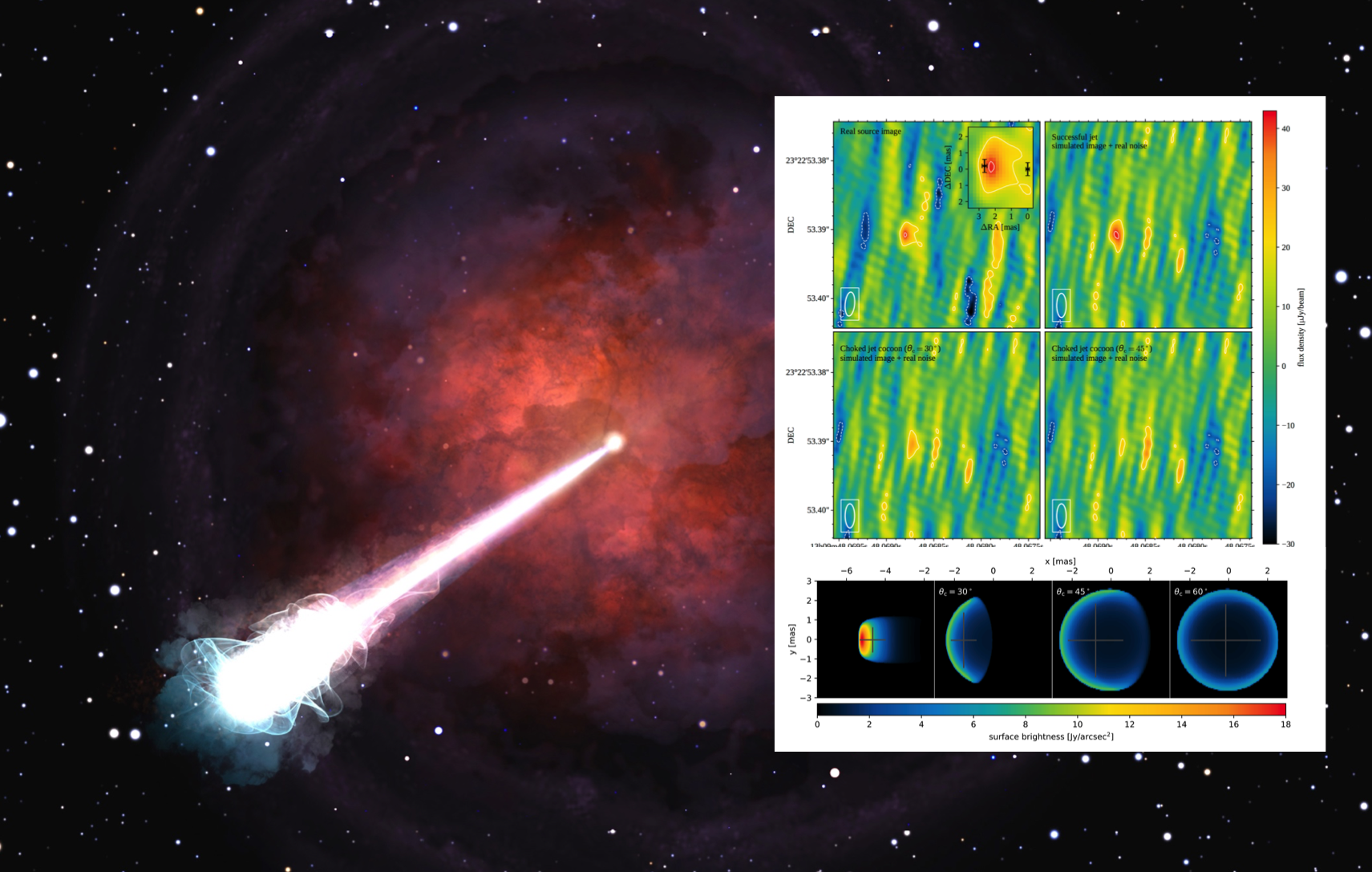Daily Image
22-02-2019The aftermath of an explosion
| Submitter: | Zsolt Paragi |
| Description: | With the detection of gravitational waves from merging black holes in 2015, a new field of astronomy was born. Another major breakthrough was the LIGO-Virgo detection of gravitational waves from merging neutron stars in 2017. This event - known as GW170817 - produced electromagnetic radiation from gamma-rays to the radio that was followed up by a great number of observatories. These observations directly linked - for the first time - short gamma-ray bursts and gravitational wave radiation. Radio observatories, including the European VLBI Network (EVN) - correlated at the Joint Institute for VLBI ERIC (JIVE) - and e-MERLIN, were monitoring this peculiar phenomenon for months (see Daily Image). Since the non-thermal radio "afterglow" emission was very weak, telescopes over 5 continents were combined in a global VLBI Network to produce the highest resolution image of the source. The obtained source size constraints show that the radio emission originate in a well collimated jet, that breaks through the shell of material that was initially ejected during the explosion. These conclusions are in agreement with the independent study published by another group, that measured the motion of the radio ejecta with the High Sensitivity Array. The artist's impression represents the jet braking through the dense gas ejecta, which was produced during the merger of neutron stars that caused the gravitational waves recorded as GW170817. The inset shows real and simulated images (up), obtained in observations as well as based on model image distributions (below) for various scenarios (collimated jet, jet-cocoon with different opening angles). These results were published in Science. See the JIVE press release. |
| Copyright: | Giancarlo Ghirlanda et al., Beabudai Design, JIVE |
| Tweet |  |
